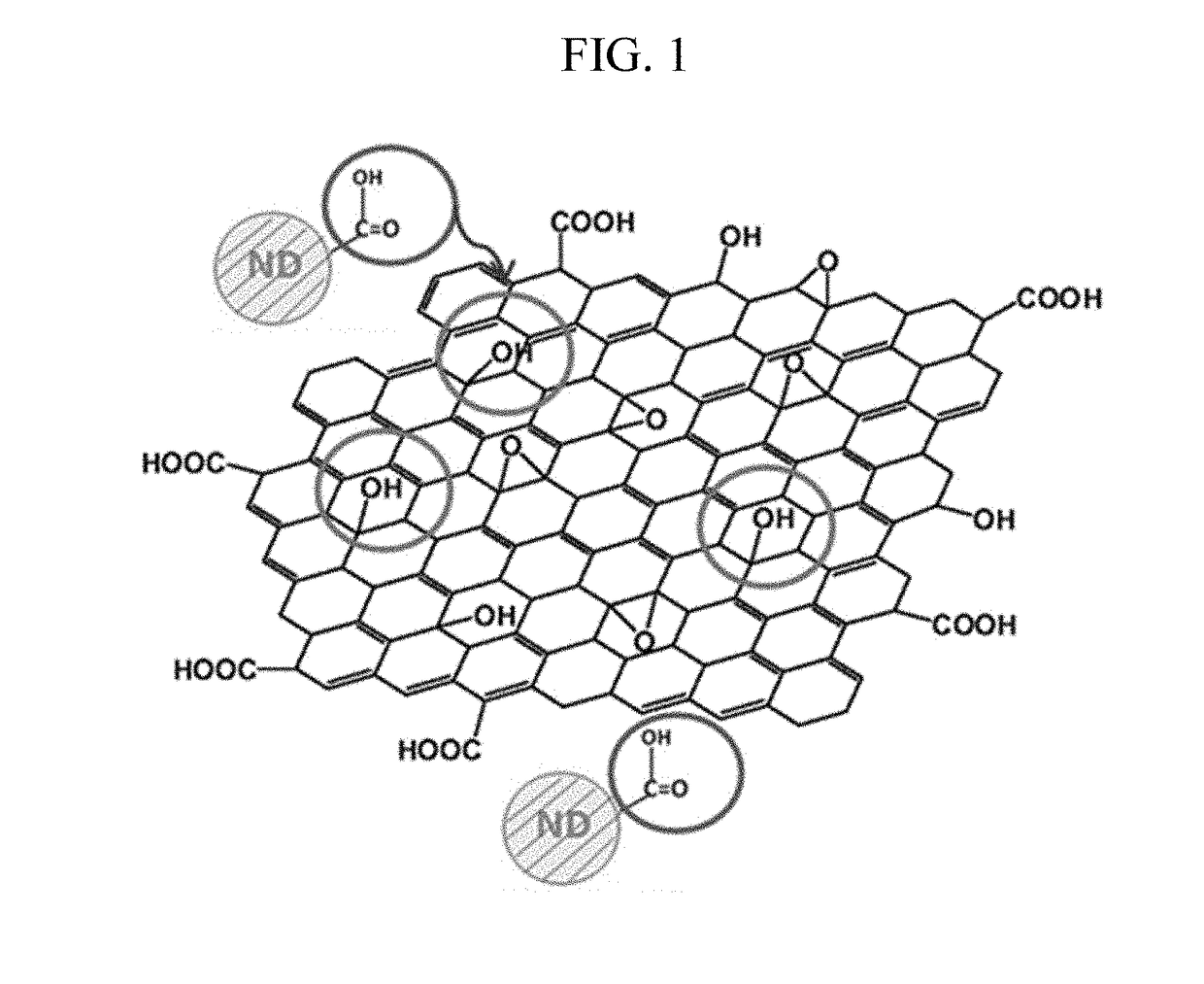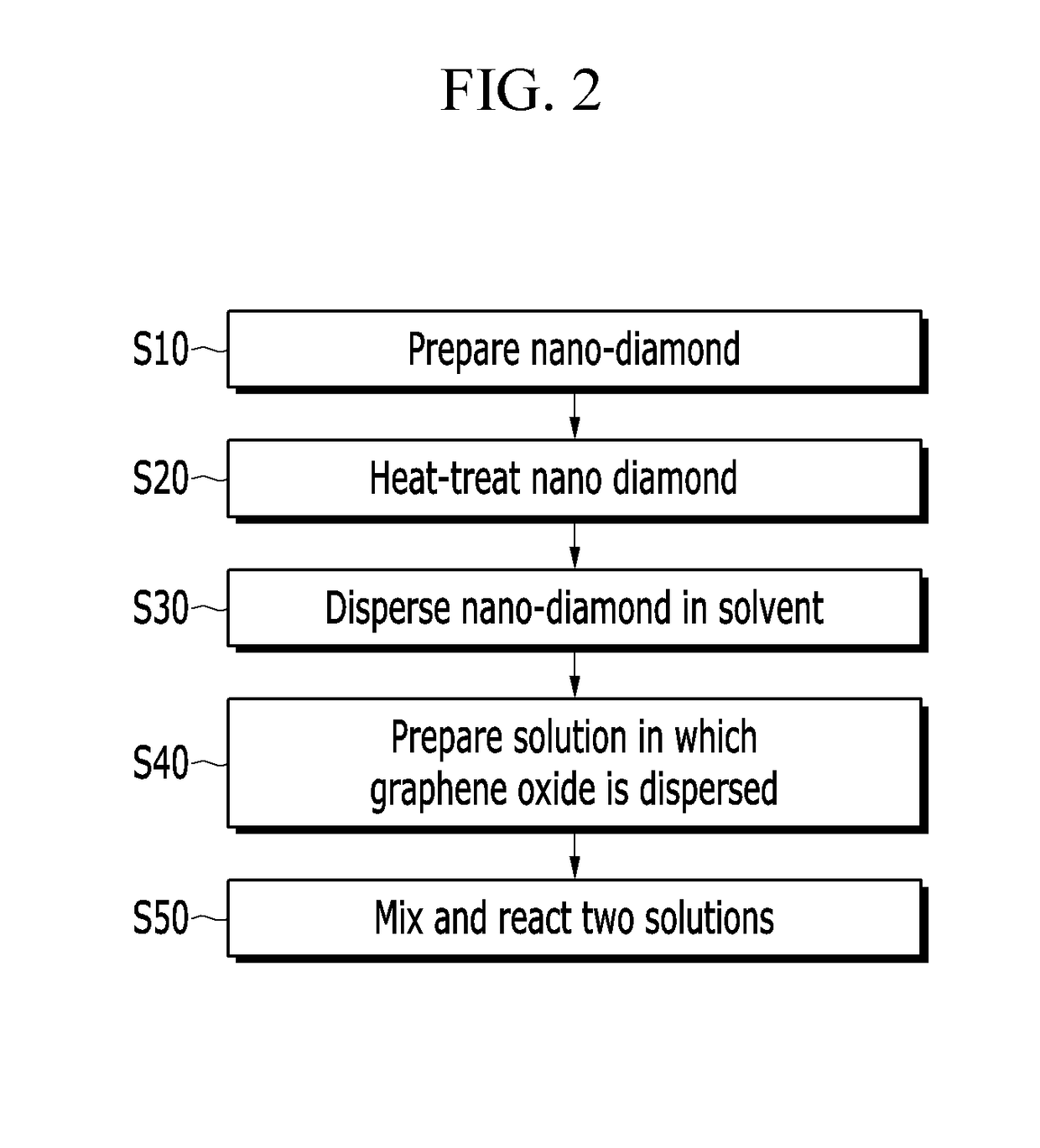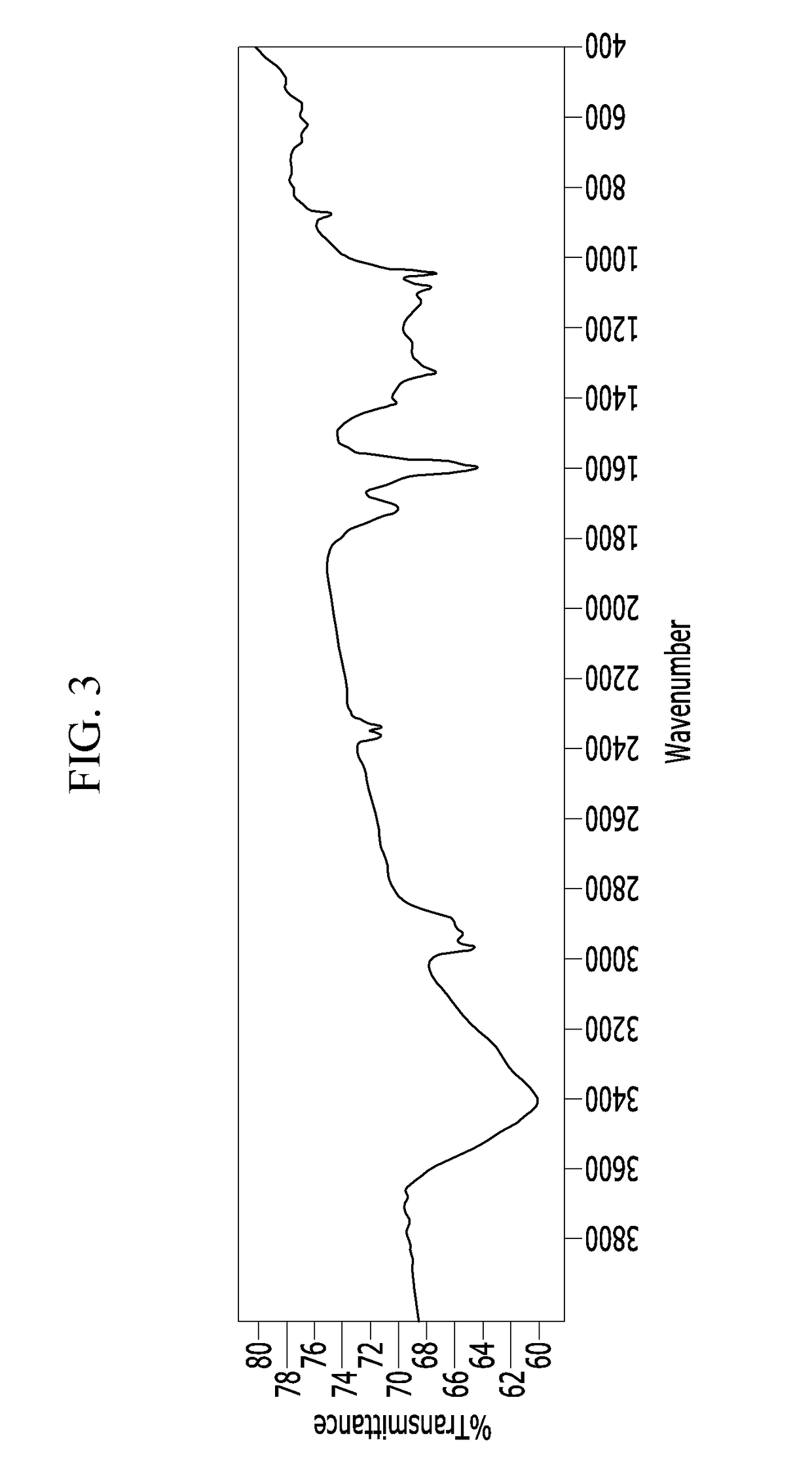Graphene oxide-nanodiamond composite, manufacturing method thereof, and nanofluid including the same
a nanodiamond and graphene oxide technology, applied in the field of graphene oxide-nanodiamond composite, manufacturing method thereof, and nanofluid including the same, can solve the problems of galvanic corrosion with these metal materials, limited use of nanofluid fillers, no affinity with solvents, etc., to achieve the effect of improving thermal conductivity, increasing resistance to precipitation, and satisfying dispersion stability
- Summary
- Abstract
- Description
- Claims
- Application Information
AI Technical Summary
Benefits of technology
Problems solved by technology
Method used
Image
Examples
example
[0093]Hereinafter, examples of the present invention and comparative examples are described. These examples, however, should not in any sense be interpreted as limiting the scope of the present invention.
Exemplary Embodiment: Preparation of the Graphene Oxide-Nanodiamond Complex
[0094]0.1 g of the nanodiamond (Manufacturer: HeYuan ZhongLian Nanotech Co. LTD) was prepared by pulverizing with jet mill until obtaining an average diameter of about 20 nm. The nanodiamond powder was heat-treated for about 1 h at 500° C. in the air. FIG. 3 and FIG. 4 illustrate the infrared spectroscopic analysis result of the nanodiamond before and after the heat treatment, respectively. As shown in FIG. 4, a peak was observed around about 1764 cm−1, and it can be confirmed that a C═O functional group of COOH was formed.
[0095]The heat-treated nanodiamond was introduced into 100 ml of tetrahydrofuran (THF) and dispersed by ultrasonic waves for about 2 h, 5 g of N,N′-dicyclohexylcarbodiimide (DCC) was introd...
experimental example
uation of the Nanofluid
[0100]5 parts by weight of the graphene oxide-nanodiamond complex prepared according to the exemplary embodiment were added to 95 parts by weight of a 1:1 complex solvent of water and ethylene glycol, and were dispersed by ultrasonic waves to prepare the nanofluid.
[0101]In order to test the metal corrosion of the nanofluid, aluminum, cast iron, steel, brass, solder, and copper as samples were prepared, and were dipped into the nanofluid. FIG. 7 illustrates a photograph of the metal samples after being taken out.
[0102]Table 1 represents the corrosion states of the metal samples observed by the naked eye.
[0103]FIG. 8 illustrates a photograph after the prepared nanofluid is left to stand. As shown in FIG. 8, it can be seen that the dispersion was excellent even though the prepared nanofluid was left to stand for a long period of time.
PUM
 Login to View More
Login to View More Abstract
Description
Claims
Application Information
 Login to View More
Login to View More - R&D
- Intellectual Property
- Life Sciences
- Materials
- Tech Scout
- Unparalleled Data Quality
- Higher Quality Content
- 60% Fewer Hallucinations
Browse by: Latest US Patents, China's latest patents, Technical Efficacy Thesaurus, Application Domain, Technology Topic, Popular Technical Reports.
© 2025 PatSnap. All rights reserved.Legal|Privacy policy|Modern Slavery Act Transparency Statement|Sitemap|About US| Contact US: help@patsnap.com



